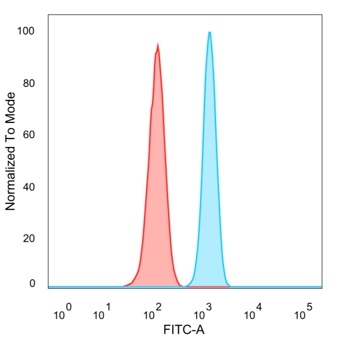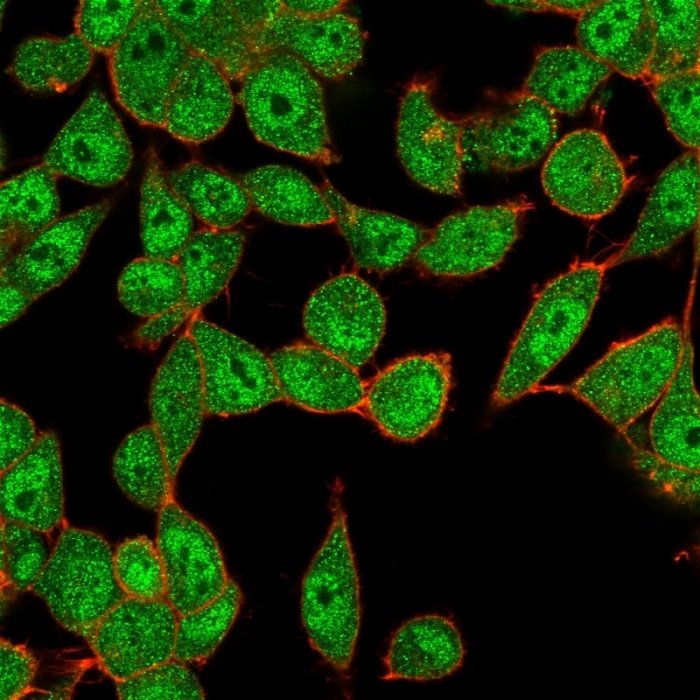Free Shipping in the U.S. for orders over $1000. Shop Now>>

Flow Cytometric Analysis of PFA-fixed HeLa cells.UBE2B Mouse Monoclonal Antibody (PCRP-UBE2B-1C7) followed by goat anti-mouse IgG-CF488 (blue); unstained cells (red).

Immunofluorescent Analysis of PFA-fixed HeLa cells. UBE2B Mouse Monoclonal Antibody (PCRP-UBE2B-1C7) followed by IgG-CF488 (green), counterstained with phalloidin.

Analysis of Protein Array containing more than 19,000 full-length human proteins using UBE2B Mouse Monoclonal Antibody (PCRP-UBE2B-1C7). Z- and S- Score: The Z-score represents the strength of a signal that a monoclonal antibody (MAb) (in combination with a fluorescently-tagged anti-IgG secondary antibody) produces when binding to a particular protein on the HuProtTM array. Z-scores are described in units of standard deviations (SD's) above the mean value of all signals generated on that array. If targets on HuProtTM are arranged in descending order of the Z-score, the S-score is the difference (also in units of SD's) between the Z-score. S-score therefore represents the relative target specificity of a MAb to its intended target. A MAb is considered to specific to its intended target, if the MAb has an S-score of at least 2.5. For example, if a MAb binds to protein X with a Z-score of 43 and to protein Y with a Z-score of 14, then the S-score for the binding of that MAb to protein X is equal to 29.
The ubiquitin (Ub) pathway involves three sequential enzymatic steps that facilitate the conjugation of Ub and Ub-like molecules to specific protein substrates. The first step requires the ATP-dependent activation of the Ub C-terminus and the assembly of multi-Ub chains by the Ub-activating enzyme known as the E1 component. The Ub chain is then conjugated to the Ub-conjugating enzyme (E2) to generate an intermediate Ub-E2 complex. The Ub-ligase (E3) then catalyzes the transfer of Ub from E2 to the appropriate protein substrate. UBE2A (ubiquitin-conjugating enzyme E2 A) and UBE2B (ubiquitin-conjugating enzyme E2 B) are both Ub-conjugating enzymes that are essential to post replication repair of UV-damaged DNA. UBE2A and UBE2B are both nuclear and cell membrane proteins that have been found to interact with Rad18.
There are no reviews yet.